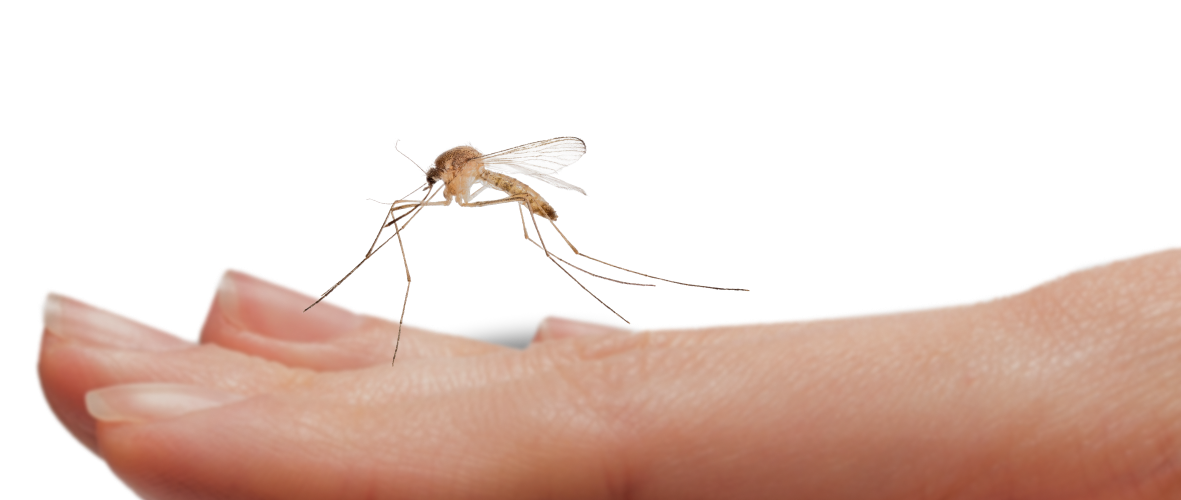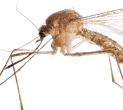Mosquito Control Sydney



Mosquitoes are found all over the world, in both tropical and temperate climates. The mosquito is a small, flying insect that is found throughout the world. There are over 3,000 different mosquito species of mosquito, and they are all members of the family Culicidae. Some species of mosquito also have brightly coloured patterns on their bodies. Mosquitoes are known for their role in transmitting various diseases, such as malaria, yellow fever, and dengue fever.
Some species of mosquito can travel long distances in search of food or mates, but most only fly short distances from their breeding sites.
Mosquitoes are attracted to warm environments, and they often congregate near standing water. This is because mosquitoes lay their eggs on a water surface, and the larvae need water to survive.
Mosquitoes are most active at dawn and dusk, but they can also bite during the day or night depending on the species.
They are capable of transmitting diseases such as malaria and yellow fever.
A mosquito is typically black or brown in colour and ranges in size from 3 to 10 millimetres. Most mosquitoes have six legs, but some species have only four or eight. The head of a mosquito contains the eyes, mouthparts, and antennae. The eyes of a mosquito are large and complex, and they are located on either side of the head which provides excellent vision. The mouthparts are long and thin, adapted for piercing skin and sucking blood. The antennae are long and sensitive, allowing mosquitoes to detect movement from far away. The mosquito also has a long, thin proboscis, which it uses to pierce the skin and draw blood.
Most species of mosquito also have a pair of small scales located just behind the eyes. These scales help to protect the mosquito's delicate wings.
The body of a mosquito is divided into three main sections: the head, thorax, and abdomen. The thorax is the middle section of the body, and it houses the mosquito's six legs and two wings. The abdomen is the back section of the body, and it contains the digestive system and reproductive organs. Male and female mosquitoes can usually be distinguished by their antennae; males have thinner antennae than females. At the end of the abdomen, there are two small tubes known as spiracles. These spiracles are used for breathing, and they are located just below the mosquito's wings.
The two wings of the mosquito are clear and are covered with tiny scales. These wings allow the mosquito to fly swiftly and with great agility
The life cycle of a mosquito consists of four distinct stages: egg, larva, pupa, and adult.
Eggs
The female mosquito lays her eggs in any water surface such as standing water, which can be anything from a puddle to a pond., where they hatch into larvae within 48 hours.
Larvae
Larvae also known as Wrigglers, due to their distinctive swimming motion, go through four stages of development, moulting after each one. They grow rapidly, feeding on microorganisms in the water and grow rapidly, shedding their skin several times as they develop. After about two weeks, the wrigglers transform into pupae, which float at the surface of the water.
Pupa
The pupa stage of a mosquito's life cycle is characterized by several changes in the insect's appearance. The first change is the development of wings, which give the mosquito the ability to fly. The second change is the hardening of the mosquito's exoskeleton. This process makes the mosquito's body more resistant to damage, and also protects the internal organs from dehydration. Finally, the pupal stage is marked by a dramatic increase in size. This increase in size is necessary for the mosquito to store enough energy to make it through the next stage of its life cycle.
Pupae do not feed and typically spend several days floating in the water before emerging as adults.
Adult mosquito
Adult mosquitoes generally live between two weeks and a month, though some species can live up to six months in ideal conditions. Females typically outlive males, as they do not copulate until later in life and do not expend energy on producing offspring. After emerging from their pupal stage, adult mosquitoes must mate before they can lay eggs.
Females will mate multiple times throughout their lifetime, while males usually only mate once. After copulation, females will rest for a few days while their eggs mature. Once they are ready to lay eggs, females will insert their ovipositor into a suitable body of water, such as a pond or puddle. Depending on the species, a female can lay anywhere from 50 to 500 eggs at a time
Adult mosquitoes feed on nectar and blood, and the female requires a blood meal in order to produce eggs.
The entire life cycle from egg to adult can take as little as seven days, making mosquitoes one of the most prolific pests in the world.
Mosquito bites
A mosquito bite is a penetration of the skin by the mouthparts of the female mosquito. She uses these to see through the skin and deposit some saliva, which contains an anticoagulant, into the wound. The body reacts to this invasion by producing histamines and other chemicals that cause the characteristic redness, itching, and swelling associated with a mosquito bite. In addition, when a mosquito bites someone who is already infected with a virus or parasites, she can also transmit these diseases. Mosquitoes are responsible for transmitting diseases such as malaria, Zika virus, dengue fever, yellow fever, and the Ross river virus.
While most people will only experience mild discomfort from a mosquito bite, for some people these bites can cause serious health problems.
Malaria
Malaria is a serious and sometimes fatal disease caused by a parasite that commonly infects a certain type of mosquito. The mosquito then passes the parasite on to humans through its bite. Malaria is most commonly found in tropical and subtropical regions, such as Africa, South America, and Asia. In humans, the parasites multiply in the liver and then infect red blood cells. This can cause a variety of symptoms, including fever, chills, and flu-like illness. If not treated promptly, malaria can lead to severe illness or death.
Mild cases can be treated with oral medication, while more severe cases may require hospitalization and intravenous treatment. In some cases, malaria can be fatal. However, early diagnosis and treatment can improve the chances of a full recovery. However, it is important to remember that prevention is still the best way to protect yourself from this disease.
Dengue fever
Dengue fever is a tropical disease caused by the Dengue virus. The virus is transmitted to humans by the Aedes aegypti mosquito, and symptoms typically include fever, rash, and muscle and joint pain. In severe cases, Dengue can lead to hemorrhagic fever or even death. There is no specific treatment for Dengue, but symptoms can be managed with pain relievers and fluids. Early diagnosis and treatment are critical, as Dengue can quickly become life-threatening. With no vaccine currently available, the best way to prevent Dengue fever is to avoid mosquito bites.
Yellow fever
Yellow fever is a viral infection that is transmitted by mosquitoes. The virus targets the liver and can cause severe damage, leading to jaundice, organ failure, and death. There is no specific cure for yellow fever, and treatment focuses on relieving symptoms and supporting the body's organs. In some cases, a patient may require a liver transplant. Yellow fever is more common in tropical and subtropical regions, but outbreaks have occurred in urban areas as well. A vaccine is available to help prevent the disease, and it is recommended for those who are travelling to areas where yellow fever is present.
Zika virus
The Zika virus is transmitted by mosquitoes and can cause fever, rash, joint pain, and red eyes in humans. It can also lead to serious birth defects in babies born to women who are infected with the virus during pregnancy. There is no specific treatment for the Zika virus, but many of the symptoms can be relieved with over-the-counter medications and rest. In severe cases, hospitalization may be necessary. Zika virus is a significant public health concern, particularly in areas where mosquitoes are common. Pregnant women and those considering becoming pregnant should avoid travelling to areas where the Zika virus is known to circulate. If travel is unavoidable, strict mosquito bite prevention measures should be followed.
Ross River Virus
Ross River virus (RRV) is a mosquito-borne disease that is found in Australia and Papua New Guinea. The virus is transmitted by the bite of an infected mosquito and can cause a range of symptoms including fever, rash, joint pain and fatigue. In severe cases, RRV can lead to Hospitalisation. There is no specific treatment for RRV and most people will recover within a few weeks. However, some people may experience ongoing joint pain and fatigue for several months. There is no vaccine available for RRV and the best way to prevent the disease is to avoid mosquito bites.
The mouthparts of the mosquito are also elongated, and they are used to pierce the skin of their victims to draw blood. At the end of the abdomen, the mosquito has a pair of sharp, retractable proboscis. Male mosquitos do not bite.
This proboscis is used to puncture the skin and insert the mosquito's saliva into the victim's bloodstream. In addition to their proboscis, mosquitoes also have a pair of sensing organs called palps. These palps help the mosquito to locate its victim by detecting body heat and carbon dioxide. Once a victim has been located, the mosquito will fly in and begin its feeding cycle.
First, the mosquito will insert its proboscis into the victim's skin. Next, it will release its saliva into the victim's bloodstream. This saliva contains anticoagulants that prevent the blood from clotting. Finally, the mosquito will withdraw its proboscis and fill its abdomen with blood.
The entire feeding process takes only a few seconds to complete. Afterwards, the mosquito will fly away in search of another victim.
The primary purpose of a male mosquito is to mate with a female. Male mosquitoes do not bite or transmit disease like their female counterparts. To mate, male and female mosquitoes must first find each other. To do this, males rely on visual cues and pheromones released by the females. Once a male has found a female, he will insert his proboscis into her abdomen and deposit his sperm. The sperm will then travel through the female's reproductive tract and fertilize her eggs. After mating, the male mosquito will typically die; however, some species are capable of mating multiple times.
If you're dealing with a mosquito infestation, you need the help of a professional pest control company like E1 Pest Solutions. We have the experience and expertise to quickly and effectively eliminate mosquitoes from your property. What's more, we can also help you to take steps to prevent future mosquito problems. For example, we can provide you with information about mosquito-proofing your home and yard, as well as advice on how to reduce the mosquito-attracting conditions on your property. When it comes to mosquito control, E1 Pest Solutions is the company to trust. We'll work with you to make sure that your property is free of mozzies, and we'll help you to take steps to prevent future problems. Contact us today to learn more.
We'll be happy to answer any of your questions and help you find the best solution for your team today. Thank you for choosing E1 Pest Control Services!